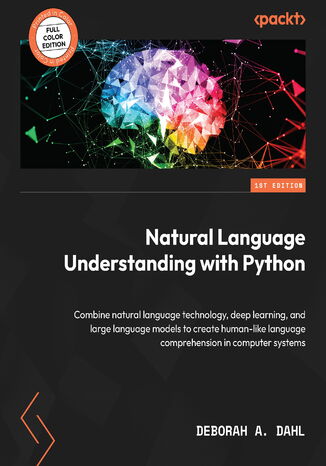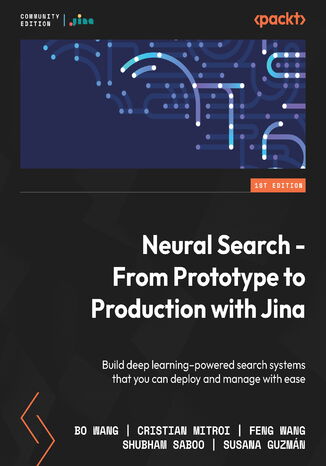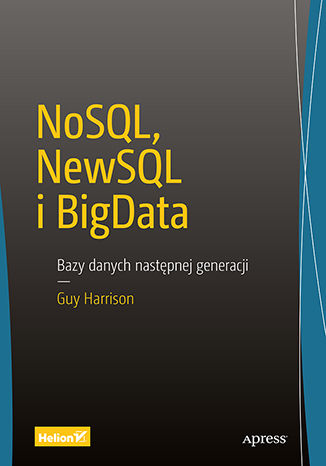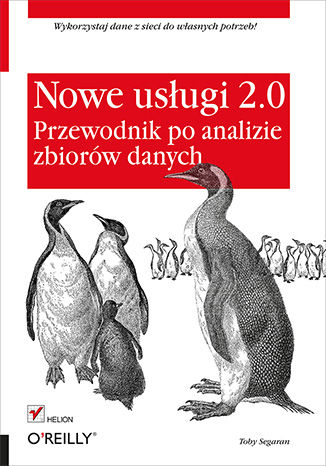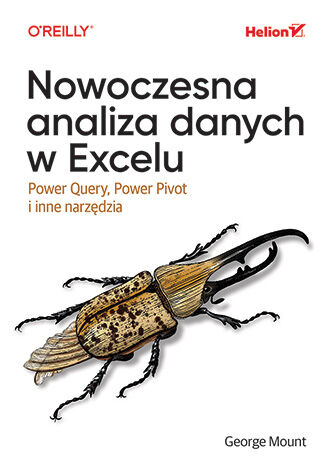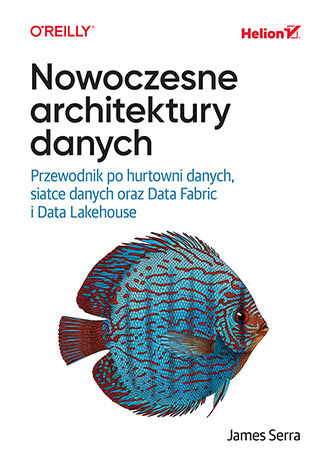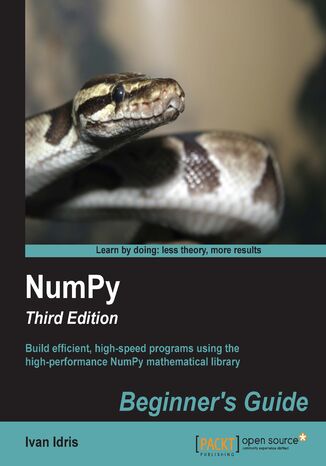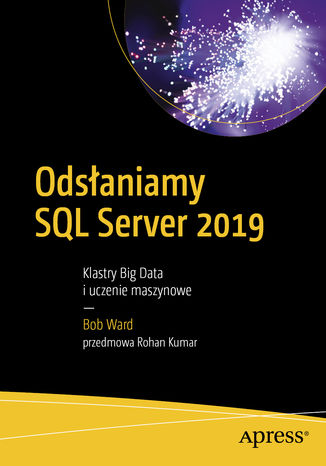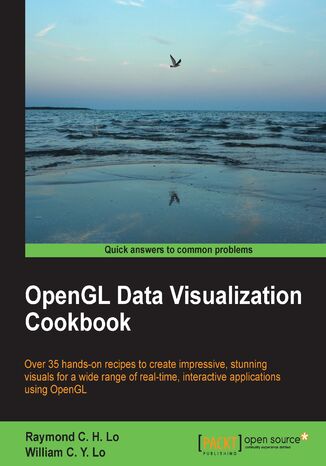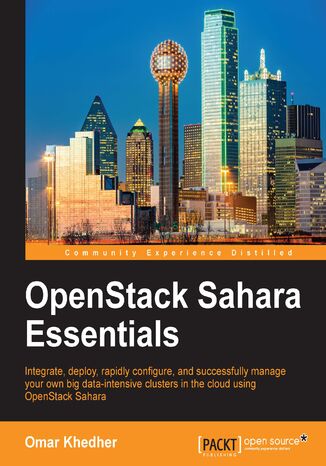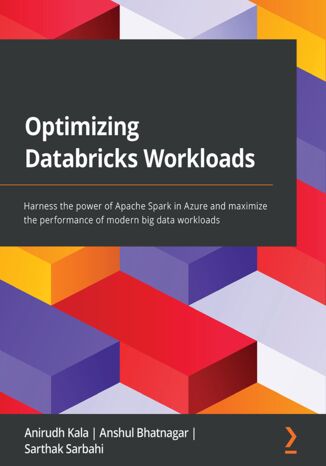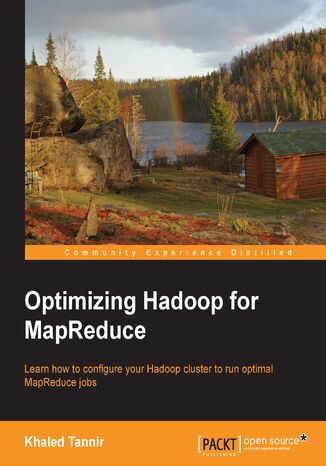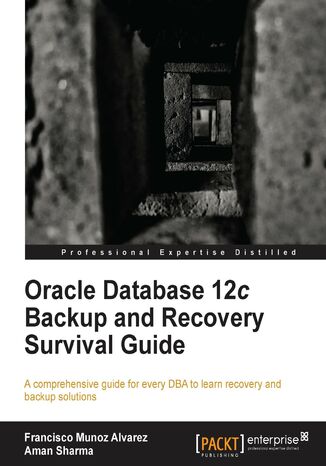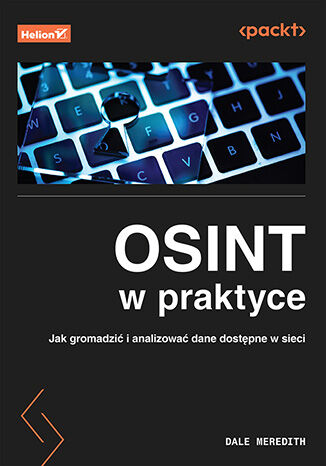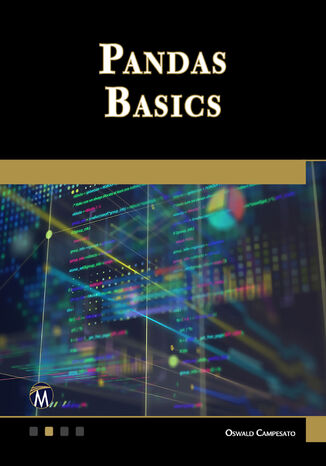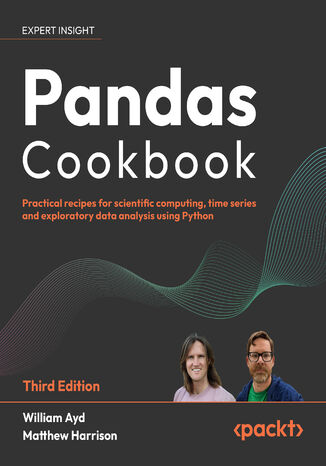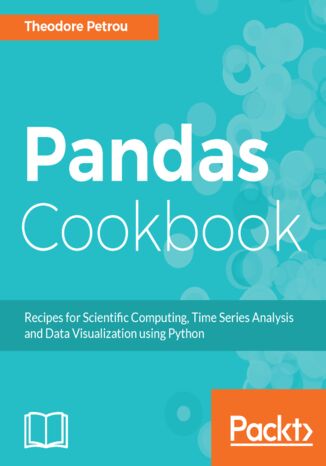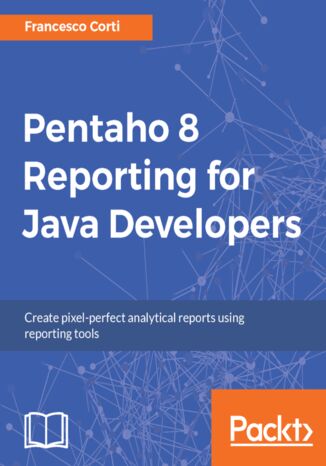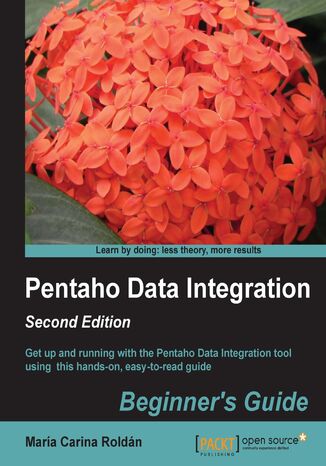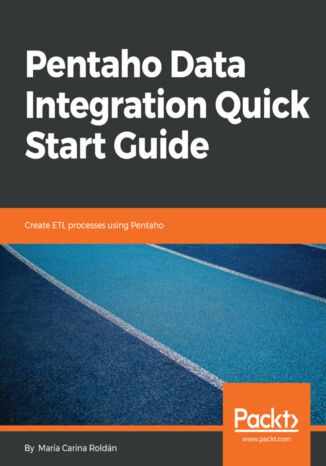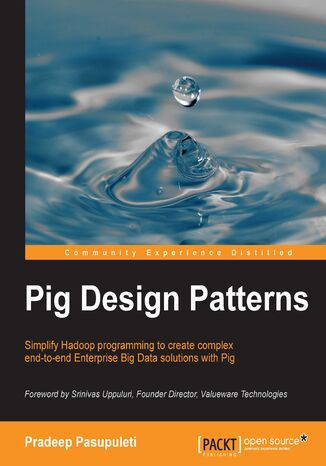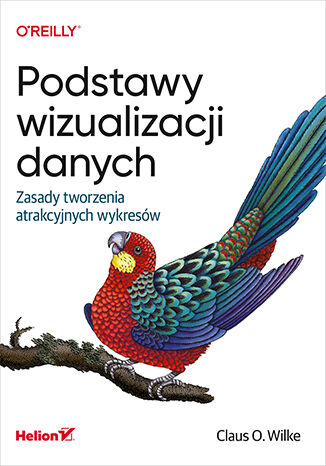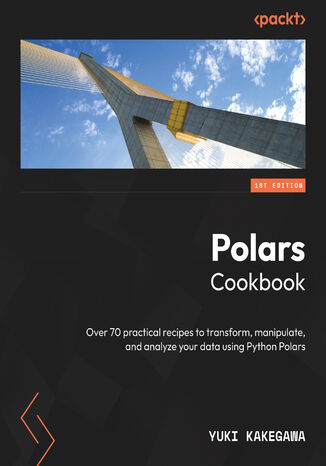Kategorien
E-Books
-
Wirtschaft
- Bitcoin
- Geschäftsfrau
- Coaching
- Controlling
- E-Business
- Ökonomie
- Finanzen
- Börse und Investitionen
- Persönliche Kompetenzen
- Computer im Büro
- Kommunikation und Verhandlungen
- Kleines Unternehmen
- Marketing
- Motivation
- Multimedia-Training
- Immobilien
- Überzeugung und NLP
- Steuern
- Sozialpolitik
- Handbȕcher
- Präsentationen
- Führung
- Public Relation
- Berichte, Analysen
- Geheimnis
- Social Media
- Verkauf
- Start-up
- Ihre Karriere
- Management
- Projektmanagement
- Personal (HR)
-
Für Kinder
-
Für Jugendliche
-
Bildung
-
Enzyklopädien, Wörterbücher
-
E-Presse
- Architektura i wnętrza
- Sicherheit und Gesundheit am Arbeitsplatz
- Biznes i Ekonomia
- Haus und Garten
- E-Business
- Ekonomia i finanse
- Esoterik
- Finanzen
- Persönliche Finanzen
- Unternehmen
- Fotografie
- Informatik
- HR und Gehaltsabrechnung
- Frauen
- Computer, Excel
- Buchhaltung
- Kultur und Literatur
- Wissenschaftlich und akademisch
- Umweltschutz
- meinungsbildend
- Bildung
- Steuern
- Reisen
- Psychologie
- Religion
- Landwirtschaft
- Buch- und Pressemarkt
- Transport und Spedition
- Gesundheit und Schönheit
-
Geschichte
-
Informatik
- Office-Programme
- Datenbank
- Bioinformatik
- IT Branche
- CAD/CAM
- Digital Lifestyle
- DTP
- Elektronik
- Digitale Fotografie
- Computergrafik
- Spiele
- Hacking
- Hardware
- IT w ekonomii
- Wissenschaftliche Pakete
- Schulbücher
- Computergrundlagen
- Programmierung
- Mobile-Programmierung
- Internet-Server
- Computernetzwerke
- Start-up
- Betriebssysteme
- Künstliche Inteligenz
- Technik für Kinder
- Webmaster
-
Andere
-
Fremdsprachen lernen
-
Kultur und Kunst
-
Lektüre
-
Literatur
- Anthologien
- Ballade
- Biografien und Autobiografien
- Für Erwachsene
- Drama
- Tagebücher, Memoiren, Briefe
- Epos
- Essay
- Science Fiction
- Felietonys
- Fiktion
- Humor, Satire
- Andere
- Klassisch
- Krimi
- Sachbücher
- Belletristik
- Mity i legendy
- Nobelpreisträger
- Kurzgeschichten
- Gesellschaftlich
- Okultyzm i magia
- Erzählung
- Erinnerungen
- Reisen
- Gedicht
- Poesie
- Politik
- Populärwissenschaftlich
- Roman
- Historischer Roman
- Prosa
- Abenteuer
- Journalismus
- Reportage
- Romans i literatura obyczajowa
- Sensation
- Thriller, Horror
- Interviews und Erinnerungen
-
Naturwissenschaften
-
Sozialwissenschaften
-
Schulbücher
-
Populärwissenschaft und akademisch
- Archäologie
- Bibliotekoznawstwo
- Filmwissenschaft
- Philologie
- Polnische Philologie
- Philosophie
- Finanse i bankowość
- Erdkunde
- Wirtschaft
- Handel. Weltwirtschaft
- Geschichte und Archäologie
- Kunst- und Architekturgeschichte
- Kulturwissenschaft
- Linguistik
- Literaturwissenschaft
- Logistik
- Mathematik
- Medizin
- Geisteswissenschaften
- Pädagogik
- Lehrmittel
- Populärwissenschaftlich
- Andere
- Psychologie
- Soziologie
- Theatrologie
- Teologie
- Theorien und Wirtschaftswissenschaften
- Transport i spedycja
- Sportunterricht
- Zarządzanie i marketing
-
Handbȕcher
-
Spielanleitungen
-
Professioneller und fachkundige Leitfaden
-
Jura
- Sicherheit und Gesundheit am Arbeitsplatz
- Geschichte
- Verkehrsregeln. Führerschein
- Rechtswissenschaften
- Gesundheitswesen
- Allgemeines. Wissenskompendium
- akademische Bücher
- Andere
- Bau- und Wohnungsrecht
- Zivilrecht
- Finanzrecht
- Wirtschaftsrecht
- Wirtschafts- und Handelsrecht
- Strafrecht
- Strafrecht. Kriminelle Taten. Kriminologie
- Internationales Recht
- Internationales und ausländisches Recht
- Gesundheitsschutzgesetz
- Bildungsrecht
- Steuerrecht
- Arbeits- und Sozialversicherungsrecht
- Öffentliches, Verfassungs- und Verwaltungsrecht
- Familien- und Vormundschaftsrecht
- Agrarrecht
- Sozialrecht, Arbeitsrecht
- EU-Recht
- Industrie
- Agrar- und Umweltschutz
- Wörterbücher und Enzyklopädien
- Öffentliche Auftragsvergabe
- Management
-
Führer und Reisen
- Afrika
- Alben
- Südamerika
- Mittel- und Nordamerika
- Australien, Neuseeland, Ozeanien
- Österreich
- Asien
- Balkan
- Naher Osten
- Bulgarien
- China
- Kroatien
- Tschechische Republik
- Dänemark
- Ägypten
- Estland
- Europa
- Frankreich
- Berge
- Griechenland
- Spanien
- Niederlande
- Island
- Litauen
- Lettland
- Mapy, Plany miast, Atlasy
- Miniführer
- Deutschland
- Norwegen
- Aktive Reisen
- Polen
- Portugal
- Andere
- Przewodniki po hotelach i restauracjach
- Russland
- Rumänien
- Slowakei
- Slowenien
- Schweiz
- Schweden
- Welt
- Türkei
- Ukraine
- Ungarn
- Großbritannien
- Italien
-
Psychologie
- Lebensphilosophien
- Kompetencje psychospołeczne
- zwischenmenschliche Kommunikation
- Mindfulness
- Allgemeines
- Überzeugung und NLP
- Akademische Psychologie
- Psychologie von Seele und Geist
- Arbeitspsychologie
- Relacje i związki
- Elternschafts- und Kinderpsychologie
- Problemlösung
- Intellektuelle Entwicklung
- Geheimnis
- Sexualität
- Verführung
- Aussehen ind Image
- Lebensphilosophien
-
Religion
-
Sport, Fitness, Diäten
-
Technik und Mechanik
Hörbücher
-
Wirtschaft
- Bitcoin
- Geschäftsfrau
- Coaching
- Controlling
- E-Business
- Ökonomie
- Finanzen
- Börse und Investitionen
- Persönliche Kompetenzen
- Kommunikation und Verhandlungen
- Kleines Unternehmen
- Marketing
- Motivation
- Immobilien
- Überzeugung und NLP
- Steuern
- Sozialpolitik
- Handbȕcher
- Präsentationen
- Führung
- Public Relation
- Geheimnis
- Social Media
- Verkauf
- Start-up
- Ihre Karriere
- Management
- Projektmanagement
- Personal (HR)
-
Für Kinder
-
Für Jugendliche
-
Bildung
-
Enzyklopädien, Wörterbücher
-
E-Presse
-
Geschichte
-
Informatik
-
Andere
-
Fremdsprachen lernen
-
Kultur und Kunst
-
Lektüre
-
Literatur
- Anthologien
- Ballade
- Biografien und Autobiografien
- Für Erwachsene
- Drama
- Tagebücher, Memoiren, Briefe
- Epos
- Essay
- Science Fiction
- Felietonys
- Fiktion
- Humor, Satire
- Andere
- Klassisch
- Krimi
- Sachbücher
- Belletristik
- Mity i legendy
- Nobelpreisträger
- Kurzgeschichten
- Gesellschaftlich
- Okultyzm i magia
- Erzählung
- Erinnerungen
- Reisen
- Poesie
- Politik
- Populärwissenschaftlich
- Roman
- Historischer Roman
- Prosa
- Abenteuer
- Journalismus
- Reportage
- Romans i literatura obyczajowa
- Sensation
- Thriller, Horror
- Interviews und Erinnerungen
-
Naturwissenschaften
-
Sozialwissenschaften
-
Populärwissenschaft und akademisch
- Archäologie
- Philosophie
- Wirtschaft
- Handel. Weltwirtschaft
- Geschichte und Archäologie
- Kunst- und Architekturgeschichte
- Kulturwissenschaft
- Literaturwissenschaft
- Mathematik
- Medizin
- Geisteswissenschaften
- Pädagogik
- Lehrmittel
- Populärwissenschaftlich
- Andere
- Psychologie
- Soziologie
- Teologie
- Zarządzanie i marketing
-
Handbȕcher
-
Professioneller und fachkundige Leitfaden
-
Jura
-
Führer und Reisen
-
Psychologie
- Lebensphilosophien
- zwischenmenschliche Kommunikation
- Mindfulness
- Allgemeines
- Überzeugung und NLP
- Akademische Psychologie
- Psychologie von Seele und Geist
- Arbeitspsychologie
- Relacje i związki
- Elternschafts- und Kinderpsychologie
- Problemlösung
- Intellektuelle Entwicklung
- Geheimnis
- Sexualität
- Verführung
- Aussehen ind Image
- Lebensphilosophien
-
Religion
-
Sport, Fitness, Diäten
-
Technik und Mechanik
Videokurse
-
Datenbank
-
Big Data
-
Biznes, ekonomia i marketing
-
Cybersicherheit
-
Data Science
-
DevOps
-
Für Kinder
-
Elektronik
-
Grafik / Video / CAX
-
Spiele
-
Microsoft Office
-
Entwicklungstools
-
Programmierung
-
Persönliche Entwicklung
-
Computernetzwerke
-
Betriebssysteme
-
Softwaretest
-
Mobile Geräte
-
UX/UI
-
Web development
-
Management
Podcasts
Datenanalyse
Natural Language Understanding facilitates the organization and structuring of language allowing computer systems to effectively process textual information for various practical applications. Natural Language Understanding with Python will help you explore practical techniques for harnessing NLU to create diverse applications. with step-by-step explanations of essential concepts and practical examples, you’ll begin by learning about NLU and its applications. You’ll then explore a wide range of current NLU techniques and their most appropriate use-case. In the process, you’ll be introduced to the most useful Python NLU libraries. Not only will you learn the basics of NLU, you’ll also discover practical issues such as acquiring data, evaluating systems, and deploying NLU applications along with their solutions. The book is a comprehensive guide that’ll help you explore techniques and resources that can be used for different applications in the future.By the end of this book, you’ll be well-versed with the concepts of natural language understanding, deep learning, and large language models (LLMs) for building various AI-based applications.
Bo Wang, Cristian Mitroi, Feng Wang, Shubham Saboo, ...
Search is a big and ever-growing part of the tech ecosystem. Traditional search, however, has limitations that are hard to overcome because of the way it is designed. Neural search is a novel approach that uses the power of machine learning to retrieve information using vector embeddings as first-class citizens, opening up new possibilities of improving the results obtained through traditional search.Although neural search is a powerful tool, it is new and finetuning it can be tedious as it requires you to understand the several components on which it relies. Jina fills this gap by providing an infrastructure that reduces the time and complexity involved in creating deep learning–powered search engines. This book will enable you to learn the fundamentals of neural networks for neural search, its strengths and weaknesses, as well as how to use Jina to build a search engine. With the help of step-by-step explanations, practical examples, and self-assessment questions, you'll become well-versed with the basics of neural search and core Jina concepts, and learn to apply this knowledge to build your own search engine.By the end of this deep learning book, you'll be able to make the most of Jina's neural search design patterns to build an end-to-end search solution for any modality.
NoSQL, NewSQL i BigData. Bazy danych następnej generacji
Model relacyjnej bazy danych zdecydowanie dominował wśród technologii bazodanowych przez ostatnie 20 lat. Poszczególne rozwiązania były do siebie na tyle podobne, że decyzja o zastosowaniu relacyjnej bazy danych stała się oczywista. Architektura rozwiązań tego typu była zbliżona, a różnice polegały głównie na koszcie wdrożenia, wydajności, niezawodności i łatwości użycia aplikacji. Obecnie sytuacja diametralnie się zmieniła: powstało wiele radykalnie różniących się od siebie technologii bazodanowych, a wybór właściwej bazy danych stał się złożonym zadaniem, wymagającym sporej wiedzy i obarczonym poważnymi konsekwencjami natury ekonomicznej i technologicznej. Ta książka szczególnie przyda się architektom technologii informatycznych, administratorom baz danych i projektantom, którzy do wykonywania swoich obowiązków potrzebują wiedzy o najświeższych rozwiązaniach z dziedziny technologii baz danych. Omówiono tu najnowsze, wykorzystywane obecnie technologie baz danych. Wyjaśniono, w jakim celu zaprojektowano każdą z nich. Zaprezentowano możliwości poszczególnych baz danych oraz ich potencjał w rozwiązywaniu realnych problemów biznesowych i problemów z aplikacjami. Co najważniejsze, ukazano różnice w architekturze między technologiami, które mają kluczowe znaczenie przy wyborze platformy baz danych dla nowych i planowanych projektów. W tej książce między innymi: Co zrewolucjonizowało bazy danych Google, Hadoop i koncepcja BigData Pamięciowe i rozproszone bazy danych NoSQL, CQL i nowe odsłony SQL Hybrydowe bazy danych Oracle NoSQL i BigData: potężne bazy danych przyszłości!
Nowe usługi 2.0. Przewodnik po analizie zbiorów danych
Wykorzystaj dane z sieci do własnych potrzeb! Internet to nic innego jak gigantyczny zbiór danych. Każdy, kto znajdzie sposób na ich umiejętne wykorzystanie, ma szansę zbudować aplikację, która odniesie światowy sukces. Serwisy randkowe, portale społecznościowe, porównywarki cen — to tylko drobna część serwisów, które możesz wykorzystać przy tworzeniu nowej usługi. Jak analizować dane i wyciągnąć wnioski? Na wiele podobnych pytań odpowiada ta jedyna w swoim rodzaju książka. W trakcie lektury poznasz najlepsze sposoby filtrowania danych, tworzenia rekomendacji, wykrywania grup oraz wyszukiwania i klasyfikowania. Na kolejnych stronach znajdziesz bogaty zbiór informacji poświęconych algorytmom analizującym dane. Ponadto będziesz mieć możliwość zapoznania się z różnymi sposobami optymalizacji, modelowania przy użyciu drzew decyzyjnych oraz tworzenia modeli cenowych. Książka ta w rękach wprawnego programisty może stanowić niesamowite narzędzie. Otwiera wrota do świata pełnego danych i zależności pomiędzy nimi! Dzięki tej książce: poznasz najlepsze i najskuteczniejsze algorytmy do analizy danych zbudujesz model cen nauczysz się korzystać z drzew decyzyjnych zastosujesz dane z sieci do budowy nowych usług Wyciągnij właściwe wnioski z posiadanych danych! „Brawo! Nic lepszego nie przychodzi mi na myśl w przypadku programisty, który zaczyna dopiero przygodę z opisanymi w książce algorytmami i metodami. Sam (jako stary »wyjadacz« od sztucznej inteligencji) sięgnąłbym po nią w pierwszej kolejności, żeby odświeżyć swoją znajomość szczegółów.” Dan Russell, główny specjalista ds. technologii, firma Google „W książce Toby’ego w znakomity sposób dokonano rozbicia złożonego zagadnienia dotyczącego algorytmów uczenia maszynowego na praktyczne i łatwe do zrozumienia przykłady, które mogą być bezpośrednio używane do analizowania interakcji społecznościowej w obecnym internecie. Jeśli ta książka trafiła w moje ręce dwa lata wcześniej, zaoszczędziłbym mój cenny czas, gdy podążałem bezowocnymi ścieżkami.” Tim Wolters, szef ds. technologii, firma Collective Intellect
Nowoczesna analiza danych w Excelu. Power Query, Power Pivot i inne narzędzia
Organizacje stosują zaawansowane narzędzia i techniki, aby umożliwić podejmowanie decyzji na podstawie danych. Jeszcze do niedawna MS Excel nie był w stanie sprostać wymaganiom analityków, obecnie jest wschodzącą gwiazdą w świecie nowoczesnej analizy danych. Kluczem do sukcesu stało się opanowanie takich narzędzi jak Power Pivot czy Power Query. Dzięki tej praktycznej książce przekonasz się, że w Excelu możesz przeprowadzić dogłębną analizę danych i wyciągnąć z nich cenną wiedzę. Wystarczy, że skorzystasz z najnowszych funkcji i narzędzi Excela. W poradniku pokazano, jak za pomocą Power Query budować przepływy pracy porządkujące dane i jak projektować w skoroszycie relacyjne modele danych przy użyciu Power Pivot. Ponadto odkryjesz nowe możliwości przeprowadzania analiz, w tym dynamiczne funkcje tablicowe i pozyskiwanie wartościowych informacji z wykorzystaniem sztucznej inteligencji. Dowiesz się również, jak za sprawą integracji z Pythonem zautomatyzować analizę danych i budować raporty. W książce: tworzenie procesów porządkujących dane w Excelu za pomocą Power Query relacyjne modele danych i wskaźniki analityczne w Power Pivot korzystanie z dynamicznych funkcji tablicowych zastosowanie AI do identyfikacji wzorców i trendów w danych integracja funkcjonalności Pythona z Excelem Książka jest łatwa w odbiorze, praktyczna i pomocna dla analityków, a także zwykłych użytkowników! Meghan Finley, autorka i redaktorka tekstów technicznych
Architektury data fabric i data lakehouse, a także siatka danych pojawiły się niedawno jako alternatywy hurtowni danych. Te nowe architektury mają swoje mocne strony, ale podczas projektowania rzeczywistych rozwiązań musisz pamiętać o odróżnianiu faktów od przesadnych pochwał i niejasności. Nie zawsze jest to proste i oczywiste zadanie. Niezwykłość tej książki polega na przekształcaniu złożonych zagadnień technicznych w jasne i zrozumiałe objaśnienia. Annie Xu, starszy inżynier danych, Google Dzięki temu praktycznemu przewodnikowi profesjonaliści zajmujący się danymi dobrze zrozumieją wady i zalety poszczególnych rozwiązań. Omówiono tu typowe zagadnienia dotyczące architektur danych, w tym ich rozwój i możliwości. Żadna architektura nie jest na tyle uniwersalna, by być odpowiednia w każdej sytuacji, dlatego w książce znajdziesz rzetelne porównanie cech poszczególnych architektur. Dowiesz się, jakie kompromisy towarzyszą każdej z nich, niezależnie od popularności. W ten sposób o wiele łatwiej przyjdzie Ci wybór rozwiązania, które najlepiej odpowiada Twoim potrzebom. Najciekawsze zagadnienia: praktyczne działanie architektur danych, ich mocne i słabe strony wybór najlepszej architektury pod kątem konkretnego zastosowania różnice między hurtowniami i "jeziorami" danych wspólne koncepcje architektur danych i ich historyczny rozwój sesje projektowania architektury, organizacja zespołów i najważniejsze uwarunkowania Połóż tę książkę na biurku. Będziesz często po nią sięgać! Sawyer Nyquist, autor, właściciel The Data Shop
Pratap Dangeti, Allen Yu, Claire Chung, Aldrin Yim, ...
Data mining, or parsing the data to extract useful insights, is a niche skill that can transform your career as a data scientist Python is a flexible programming language that is equipped with a strong suite of libraries and toolkits, and gives you the perfect platform to sift through your data and mine the insights you seek. This Learning Path is designed to familiarize you with the Python libraries and the underlying statistics that you need to get comfortable with data mining.You will learn how to use Pandas, Python's popular library to analyze different kinds of data, and leverage the power of Matplotlib to generate appealing and impressive visualizations for the insights you have derived. You will also explore different machine learning techniques and statistics that enable you to build powerful predictive models.By the end of this Learning Path, you will have the perfect foundation to take your data mining skills to the next level and set yourself on the path to become a sought-after data science professional.This Learning Path includes content from the following Packt products:• Statistics for Machine Learning by Pratap Dangeti• Matplotlib 2.x By Example by Allen Yu, Claire Chung, Aldrin Yim• Pandas Cookbook by Theodore Petrou
Odsłaniamy SQL Server 2019: Klastry Big Data i uczenie maszynowe
Nabierz prędkości dzięki przełomowym zmianom w SQL Server 2019. Nie jest to już jedynie silnik bazodanowy, ale nowatorskie narzędzie wyposażone we wsparcie dla uczenia maszynowego, analiz Big Data, możliwość działania w systemie Linux, kontenery, Kubernetes, Javę czy wirtualizację danych w Azure. Ta książka nie zajmuje się tradycyjną administracją bazami danych w środowisku SQL Server. Koncentruje się na tym wszystkim, co nowe w jednej z najskuteczniej modernizowanych platform danych w branży. To książka dla profesjonalistów danych, którzy znają już podstawy SQL Server i chcą się rozwijać, rozbudowując umiejętności w najgorętszych obszarach nowych technologii. Zagłębimy się w szczegóły kluczowych nowych możliwości SQL Server 2019 przy użyciu podejścia „nauka przez przykład”. Zajmiemy się zagadnieniami Intelligent Performance, zabezpieczeń, dostępności i funkcjonalności oczekiwanych przez współczesnych programistów. Omówimy usprawnienia w SQL Server 2019 dla systemu Linux oraz wykorzystanie kontenerów i klastrów Kubernetes. Pokażemy, jak zwirtualizować dostęp do danych przy użyciu Polybase dla Oracle, MongoDB, Hadoop i Azure, co pozwala zredukować potrzebę stosowania kosztownych aplikacji ETL. Nauczymy się również, jak budować wszechstronne rozwiązania Big Data Clusters, sztandarowej funkcjonalności wydania 2019, zapewniającej dostęp do środowisk Spark, SQL Server HDFS i dowiemy się, jak wbudować inteligencję w nasze własne dane i wdrażać kompletne aplikacje uczenia maszynowego. Dowiedz się, jak: • Implementować Big Data Clusters przy użyciu SQL Server, Spark i HDFS • Tworzyć węzły danych z połączeniami do Oracle, Azure, Hadoop i innych źródeł • Łączyć SQL i Spark w celu zbudowania platformy uczenia maszynowego dla aplikacji AI • Zwiększyć wydajność bez zmieniania aplikacji przy użyciu Intelligent Performance • Podnieść zabezpieczenia SQL Server dzięki mechanizmom Secure Enclaves i Data Classification • Zmaksymalizować czas działania bazy danych poprzez indeksowanie online i Accelerated Database Recovery • Budować nowoczesne aplikacje przy użyciu narzędzi Graph, ML Services i T-SQL Extensibility dla języka Java • Zwiększyć możliwości wdrażania SQL Server w systemie Linux • Uruchamiać SQL Server w kontenerach i Kubernetes • Korzystać z najnowszych narzędzi i metod migracji bazy danych do SQL Server 2019 • Zastosować wiedzę na temat SQL Server 2019 w środowisku Azure
William Lo, Raymond Chun Hing Lo
OpenGL is a great multi-platform, cross-language, and hardware-accelerated graphics interface for visualizing large 2D and 3D datasets. Data visualization has become increasingly challenging using conventional approaches as datasets become larger and larger, especially with the Big Data evolution. From a mobile device to a sophisticated high-performance computing cluster, OpenGL libraries provide developers with an easy-to-use interface to create stunning visuals in 3D in real time for a wide range of interactive applications.This book provides a series of easy-to-follow, hands-on tutorials to create appealing OpenGL-based visualization tools with minimal development time. We will first illustrate how to quickly set up the development environment in Windows, Mac OS X, and Linux. Next, we will demonstrate how to visualize data for a wide range of applications using OpenGL, starting from simple 2D datasets to increasingly complex 3D datasets with more advanced techniques. Each chapter addresses different visualization problems encountered in real life and introduces the relevant OpenGL features and libraries in a modular fashion.By the end of this book, you will be equipped with the essential skills to develop a wide range of impressive OpenGL-based applications for your unique data visualization needs, on platforms ranging from conventional computers to the latest mobile/wearable devices.
The Sahara project is a module that aims to simplify the building of data processing capabilities on OpenStack.The goal of this book is to provide a focused, fast paced guide to installing, configuring, and getting started with integrating Hadoop with OpenStack, using Sahara.The book should explain to users how to deploy their data-intensive Hadoop and Spark clusters on top of OpenStack. It will also cover how to use the Sahara REST API, how to develop applications for Elastic Data Processing on Openstack, and setting up hadoop or spark clusters on Openstack.
Anirudh Kala, Anshul Bhatnagar, Sarthak Sarbahi
Databricks is an industry-leading, cloud-based platform for data analytics, data science, and data engineering supporting thousands of organizations across the world in their data journey. It is a fast, easy, and collaborative Apache Spark-based big data analytics platform for data science and data engineering in the cloud.In Optimizing Databricks Workloads, you will get started with a brief introduction to Azure Databricks and quickly begin to understand the important optimization techniques. The book covers how to select the optimal Spark cluster configuration for running big data processing and workloads in Databricks, some very useful optimization techniques for Spark DataFrames, best practices for optimizing Delta Lake, and techniques to optimize Spark jobs through Spark core. It contains an opportunity to learn about some of the real-world scenarios where optimizing workloads in Databricks has helped organizations increase performance and save costs across various domains.By the end of this book, you will be prepared with the necessary toolkit to speed up your Spark jobs and process your data more efficiently.
Francisco Munoz Alvarez, Aman Sharma
The three main responsibilities of a successful DBA are to ensure the availability, recoverability, and performance of any database. To ensure the recoverability of any database, a DBA needs to have a strong backup and recovery skills set. Every DBA is always looking for a reference book that will help them to solve any possible backup and recovery situation that they can come across in their professional life.Oracle Database 12c Backup and Recovery Survival Guide has the unique advantage to be a reference to all Oracle backup and recovery options available, making it essential for any DBA in the world. If you are new to Oracle Database, this book will introduce you to the fantastic world of backup and recovery that is vital to your success. If you are an experienced DBA, this book will become a reference guide and will also help you to learn some possible new skills, or give you some new ideas you were never aware about. It will also help you to easily find the solution to some of the most well known problems you could find during your career as a DBA. This book contains useful screenshots, scripts, and examples that you will find more than useful.Most of the books currently available in the market concentrate only on the RMAN utility to backup and recovery. This book will be an exception to the rule and will become a must-have reference, allowing you to design a real and complete backup and recovery strategy. It covers the most important topics on Oracle database such as backup strategies, Nologging operations, new features in 12c, user managed backups and recoveries, RMAN (including reporting, catalog management, troubleshooting, and performance tuning), advanced data pump, Oracle Enterprise Manager 12c and SQL Developer.Oracle Database 12c Backup and Recovery Survival Guide contains everything a DBA needs to know to keep data safe and recoverable, using real-life scenarios.
OSINT w praktyce. Jak gromadzić i analizować dane dostępne w sieci
Pojęcie OSINT pochodzi od angielskiego wyrażenia open source intelligence i oznacza biały wywiad. Polega na pozyskiwaniu danych z publicznie dostępnych źródeł. Okazuje się, że niezwykle cenne informacje są dostępne na wyciągnięcie ręki, ale trzeba wiedzieć, w jaki sposób do nich dotrzeć. A potrafi to być niezwykle wciągające zajęcie, przy okazji którego można poznać podstawy cyberbezpieczeństwa, zrozumieć czyhające w internecie zagrożenia i nauczyć się zabezpieczać swoją cyfrową obecność. Z tą książką krok po kroku zagłębisz się w metody OSINT, a także powiązane z nim zagadnienia natury prawnej i etycznej. Poznasz sposoby gromadzenia i analizowania informacji z wykorzystaniem wyszukiwarek, portali społecznościowych i innych zasobów internetowych. Zrozumiesz wagę anonimowości i technik gwarantujących bezpieczne poruszanie się po sieci, ułatwiających zarządzanie cyfrowym śladem czy tworzenie fikcyjnych tożsamości internetowych. Zdobędziesz również doświadczenie w korzystaniu z popularnych narzędzi OSINT, takich jak Recon-ng, Maltego, Shodan czy Aircrack-ng. Dowiesz się też, jak ograniczać ryzyko, przewidywać cyberataki, zapobiegać im i na nie reagować - wszystko dzięki technikom opartym na OSINT. W książce: działanie OSINT i najlepsze praktyki automatyzacja zbierania i analizy danych dane z mediów społecznościowych a OSINT zarządzanie swoim cyfrowym śladem, ograniczanie ryzyka i ochrona prywatności skuteczny program analizy ryzyka na bazie OSINT zwiększanie bezpieczeństwa firmy technikami OSINT Dołącz potężne narzędzia OSINT do swojego arsenału!
Pandas Basics. Mastering Data Analysis with Pandas
Mercury Learning and Information, Oswald Campesato
This book is essential for aspiring data scientists and anyone needing to perform data cleaning using Pandas and NumPy. It offers numerous code samples and comprehensive coverage of NumPy and Pandas features, including writing regular expressions. Chapter 3 introduces fundamental statistical concepts, while Chapter 7 delves into data visualization using Matplotlib and Seaborn. Companion files with code are available for download from the publisher.Starting with an introduction to Python, the course progresses through working with data, and then moves into Pandas, covering its functionalities in three detailed chapters. The statistical concepts provided are crucial for analyzing data effectively, while the visualization techniques enhance the ability to present data insights clearly.By the end of this course, users will have a solid foundation in data manipulation and cleaning, statistical analysis, and data visualization, enabling them to tackle real-world data science tasks confidently and efficiently.
William Ayd, Matthew Harrison, Wes McKinney
Unlock the full power of pandas 2.x with this hands-on cookbook, designed for Python developers, data analysts, and data scientists who need fast, efficient solutions for real-world data challenges. This book provides practical, ready-to-use recipes to streamline your workflow. With step-by-step guidance, you'll master data wrangling, visualization, performance optimization, and scalable data analysis using pandas’ most powerful features. From importing and merging large datasets to advanced time series analysis and SQL-like operations, this cookbook equips you with the tools to analyze, manipulate, and visualize data like a pro. Learn how to boost efficiency, optimize memory usage, and seamlessly integrate pandas with NumPy, PyArrow, and databases. This book will help you transform raw data into actionable insights with ease.
This book will provide you with unique, idiomatic, and fun recipes for both fundamental and advanced data manipulation tasks with pandas 0.20. Some recipes focus on achieving a deeper understanding of basic principles, or comparing and contrasting two similar operations. Other recipes will dive deep into a particular dataset, uncovering new and unexpected insights along the way.The pandas library is massive, and it's common for frequent users to be unaware of many of its more impressive features. The official pandas documentation, while thorough, does not contain many useful examples of how to piece together multiple commands like one would do during an actual analysis. This book guides you, as if you were looking over the shoulder of an expert, through practical situations that you are highly likely to encounter.Many advanced recipes combine several different features across the pandas 0.20 library to generate results.
This hands-on tutorial, filled with exercises and examples, introduces the reader to a variety of concepts within Pentaho Reporting. With screenshots that show you how reports look at design time as well as how they should look when rendered as PDF, Excel, HTML, Text, Rich-Text-File, XML, and CSV, this book also contains complete example source code that you can copy and paste into your environment to get up-and-running quickly. Updated to cover the features of Pentaho 8, this book will teach you everything you need to know to build fast, efficient reports using Pentaho. If your interest lies in the technical details of creating reports and you want to see how to solve common reporting problems with a minimum of fuss, this is the book for you.
Capturing, manipulating, cleansing, transferring, and loading data effectively are the prime requirements in every IT organization. Achieving these tasks require people devoted to developing extensive software programs, or investing in ETL or data integration tools that can simplify this work.Pentaho Data Integration is a full-featured open source ETL solution that allows you to meet these requirements. Pentaho Data Integration has an intuitive, graphical, drag-and-drop design environment and its ETL capabilities are powerful. However, getting started with Pentaho Data Integration can be difficult or confusing.Pentaho Data Integration Beginner's Guide - Second Edition provides the guidance needed to overcome that difficulty, covering all the possible key features of Pentaho Data Integration.Pentaho Data Integration Beginner's Guide - Second Edition starts with the installation of Pentaho Data Integration software and then moves on to cover all the key Pentaho Data Integration concepts. Each chapter introduces new features, allowing you to gradually get involved with the tool. First, you will learn to do all kinds of data manipulation and work with plain files. Then, the book gives you a primer on databases and teaches you how to work with databases inside Pentaho Data Integration. Moreover, you will be introduced to data warehouse concepts and you will learn how to load data in a data warehouse. After that, you will learn to implement simple and complex processes. Finally, you will have the opportunity of applying and reinforcing all the learned concepts through the implementation of a simple datamart.With Pentaho Data Integration Beginner's Guide - Second Edition, you will learn everything you need to know in order to meet your data manipulation requirements.
Pentaho Data Integration Quick Start Guide. Create ETL processes using Pentaho
Pentaho Data Integration(PDI) is an intuitive and graphical environment packed with drag and drop design and powerful Extract-Transform-Load (ETL) capabilities. Given its power and flexibility, initial attempts to use the Pentaho Data Integration tool can be difficult or confusing. This book is the ideal solution.This book reduces your learning curve with PDI. It provides the guidance needed to make you productive, covering the main features of Pentaho Data Integration. It demonstrates the interactive features of the graphical designer, and takes you through the main ETL capabilities that the tool offers.By the end of the book, you will be able to use PDI for extracting, transforming, and loading the types of data you encounter on a daily basis.
Podstawy wizualizacji danych. Zasady tworzenia atrakcyjnych wykresów
Aby skutecznie przekazać wiedzę płynącą z zebranych danych, szczególnie w przypadku nauk przyrodniczych, ekonomicznych i społecznych, warto sięgnąć po narzędzia do wizualizacji. Nie jest to trywialne zadanie: często trzeba korzystać z coraz większych i coraz bardziej złożonych zbiorów danych, a dostępne narzędzia do wizualizacji zapewniają oszałamiający wybór rozwiązań i opcji, w których łatwo się pogubić. Co więcej, podczas przygotowywania prezentacji należy wziąć pod uwagę szczególne właściwości ludzkiego umysłu w zakresie postrzegania i przyswajania informacji. Efektywna wizualizacja danych jest bardzo istotną sprawą: nierzadko od jakości przekazywanych w ten sposób informacji zależy trafność podejmowanych decyzji. Ten poradnik pomoże Ci uniknąć często spotykanych problemów z wizualizacją danych. Zawiera wskazówki, dzięki którym szybko zaczniesz tworzyć świetnie wyglądające i bogate w treść wykresy. Nauczysz się bezbłędnego dobierania najlepszego w danej sytuacji sposobu wizualizacji, poznasz reguły stosowania kolorów, wielkości i rodzaju czcionki, zachowywania odpowiednich proporcji poszczególnych części wykresu — i przekonasz się, że dobrymi decyzjami co do jego estetyki możesz zapewnić mu przejrzystość i elegancję. Znajdziesz tu również obszerny katalog wizualizacji, co ułatwi zapoznanie się z powszechnie używanymi metodami wizualizowania danych. Ważną częścią książki jest zestaw przykładów dobrze i źle przygotowanych wykresów z wyczerpującymi wyjaśnieniami. Najciekawsze koncepcje opisane w książce: kolor jako cenne narzędzie wyróżniania danych dostarczanie kluczowych informacji na wiele sposobów dobór technik wizualizacji do różnych rodzajów danych reguły pomocne w projektowaniu estetycznych wykresów technika stosowania wykresów w większym dokumencie A więc jak wygląda wykres, który decyduje o sukcesie prezentacji?
The Polars Cookbook is a comprehensive, hands-on guide to Python Polars, one of the first resources dedicated to this powerful data processing library. Written by Yuki Kakegawa, a seasoned data analytics consultant who has worked with industry leaders like Microsoft and Stanford Health Care, this book offers targeted, real-world solutions to data processing, manipulation, and analysis challenges. The book also includes a foreword by Marco Gorelli, a core contributor to Polars, ensuring expert insights into Polars' applications. From installation to advanced data operations, you’ll be guided through data manipulation, advanced querying, and performance optimization techniques. You’ll learn to work with large datasets, conduct sophisticated transformations, leverage powerful features like chaining, and understand its caveats. This book also shows you how to integrate Polars with other Python libraries such as pandas, numpy, and PyArrow, and explore deployment strategies for both on-premises and cloud environments like AWS, BigQuery, GCS, Snowflake, and S3. With use cases spanning data engineering, time series analysis, statistical analysis, and machine learning, Polars Cookbook provides essential techniques for optimizing and securing your workflows. By the end of this book, you'll possess the skills to design scalable, efficient, and reliable data processing solutions with Polars.

